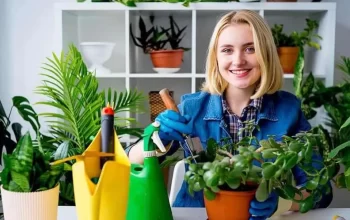Pollinators play a crucial role in our food supply, yet their numbers have been declining rapidly over the past decades. Therefore, it’s essential that gardens provide them with everything they require for successful pollination.
Flowers may be the main draw, but bees also love grasses and evergreen shrubs, while adding shallow dishes or fountains can draw in butterflies and hummingbirds. Don’t be intimidated by growing a range of colors and flower shapes – staggered bloom times make your garden more appealing than just one massive patch of the same thing!
Plant a Variety of Flowers
Your garden will become more appealing to pollinators when its flowering plants are diverse. Select tubular, bowl-shaped and flat-topped blooms in various flower shapes. Also incorporate blues and purples (bees cannot see red) along with an assortment of scents.
Planting a diverse mix of flowers throughout the growing season to provide bees and butterflies with nectar will ensure its success, since various species will bloom at different times during spring, summer, and fall.
Consider planting low-growing perennial plants with beautiful foliage and flowers such as yarrow, Oregon stonecrop or California poppy for a beautiful display of foliage and blooms, brightly-colored shrubs or small trees such as flowering dogwood, pawpaw or redbud for added interest. Also consider adding caterpillar host plants or fruit trees that attract hummingbirds – butterfly larvae will appreciate having something they feed on too! The key is having an array of flowering plants, grasses, herbs shrubs and trees that will support pollinators populations all year long!
Plant Native Plants
Pollinator gardens aim to attract and support native bees, butterflies, hummingbirds, flies and other pollinators that play an essential role in our ecosystem but have unfortunately suffered due to habitat loss and overuse of chemical pesticides. Their numbers have drastically declined – which threatens ecosystem stability as a whole.
As a first step, find a local grower offering pesticide-free plants. Native varieties tend to adapt better to local climate and require less water and fertilizer than imported varieties.
Once your plants are ready to be planted, remove any sod or other undesirable vegetation from their intended area. Till the soil to loosen it and add 1 or 2 inches of organic compost; this will improve soil quality while providing vital nutrients for plant growth. You should stagger flower planting throughout the growing season, giving pollinators enough sustenance.
Add a Bee Bath
February is an ideal month to consider creating a pollinator garden. Seed catalogs abound, while subzero temperatures provide an excuse to stay indoors with coffee in hand and create your garden plan.
An effective pollinator-friendly garden features perennials, annuals, vines, shrubs and trees with blooms in various shapes, colors and scents; as well as flowering trees that produce fruit such as berries or nuts or even seeds for pollinators to feed on.
Planting various flowers helps ensure a steady supply of nectar and pollen throughout the year, especially during autumn when food can become scarce for bees. But to keep pollinators happy and healthy year-round, provide them with access to water – perhaps by building a bee bath using shallow dish, small pan or even mud puddle. Add rocks or flat stones for bees to perch on and regularly change out its contents!
Build a Nest
An abundant pollinator garden is not only visually striking but also vitally important in protecting these essential species.
To create a landscape suitable for bees, opt for perennials, shrubs and annual flowers that attract bees rather than lawnmowing services. Open or flat blooms provide easy access for bees to pollen and nectar sources – especially orange, red and yellow hued flowers are an effective choice!
Pollinators require shelter and nesting sites, in addition to food sources. Provide them with patches of bare soil or piles of twigs with hollow plant stems for bees to build their nests in. Furthermore, avoid insecticide use since such chemicals can weaken or kill bees and butterflies.
Consider including some flowering vegetables and herbs such as thyme, calendula, marigolds, cornflowers, cosmos sunflowers and zinnias in your garden design, such as thyme, calendula marigolds cornflowers cosmos sunflowers sunflowers and zinnias – not forgetting popular choices like yarrow which features long blooming periods while tolerating drought conditions while its purple spikes attract bees!





